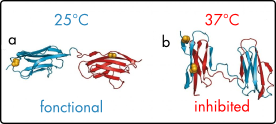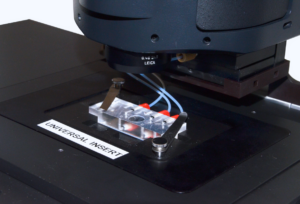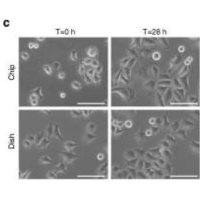Introduction
For full efficiency of the CherryTemp temperature controller, samples must be placed close to the CherryTemp thermalisation chip (<500µm). Therefore, preparing a thin agar pad is a critical step. The following protocol shows how to prepare thin agar pads and how to couple them to the CherryTemp technology.
Step-by-step guidelines:
Step 1: Align 3 microscope slides and stick lab tape on the 2 external ones (lengthwise).

Step 2: Drop melted agarose (50 to 100µl) on the middle one. Diameter of the pad must be around 1cm diameter.
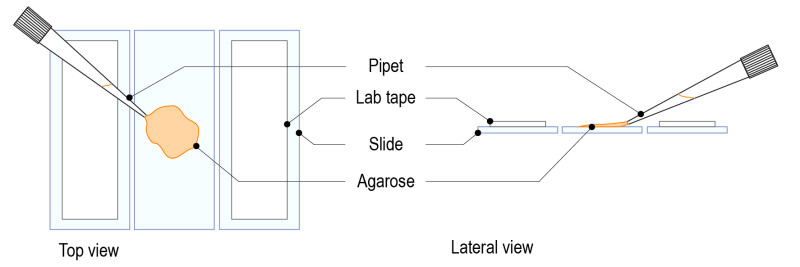
Step 3: Top the agarose with another clean slide, placed perpendicularly. Apply gentle pressure and allow agarose to solidify.
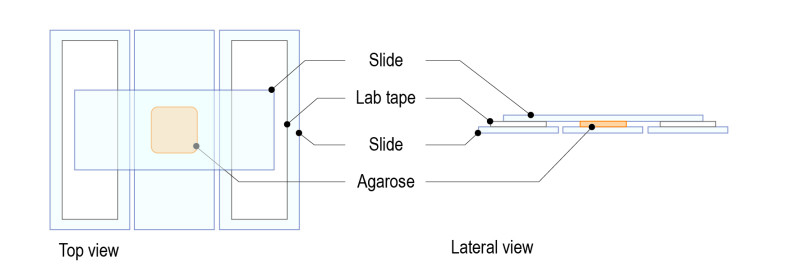
Step 4: After agarose has solidified, gently remove the top slide by rotating. Agarose is ready to use, and the pad will be less than 500µM thick.

Step 5: Top the chip with our dedicated spacer (engraved arrows facing down, glass surface and microfluidic chamber facing up).

Step 6: Transfer the pad onto the CherryTemp chip. The pad must be centred on the thermalising pattern.

Step 7: Pipet the yeast sample on the agar pad. Few microliters of medium are enough. For optimal cell density, first concentrate your sample by spinning cells.
Important: yeast cells must be centred on the agar pad.
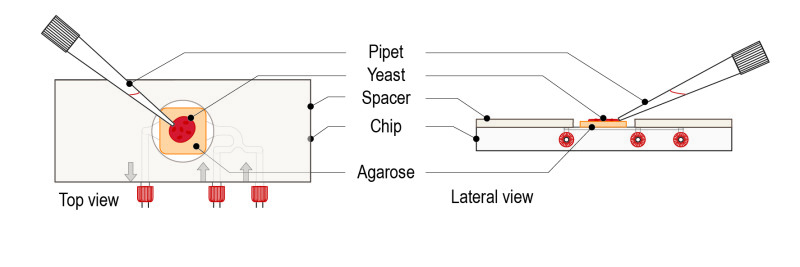
Step 8: Top with a high-resolution glass coverslip. The mounted sample is ready for observation in an upright microscope configuration.
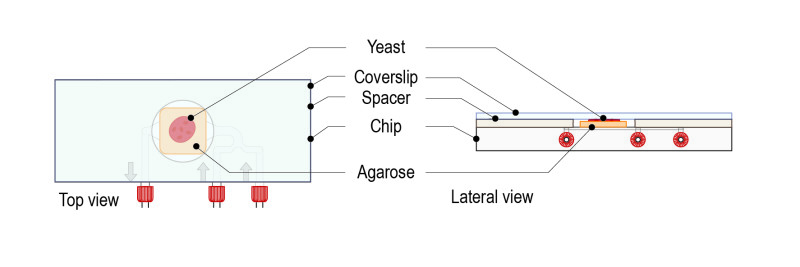
Step 9: Flip the mounted sample 180° for an inverted microscope configuration.
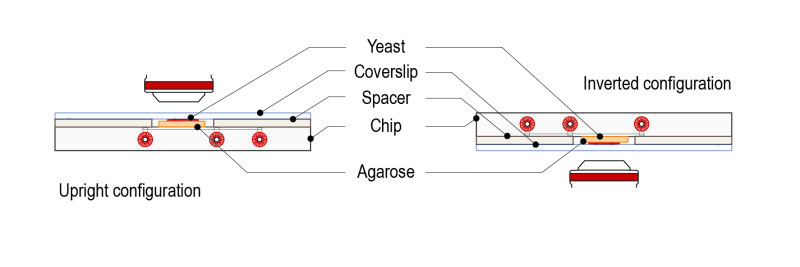
References
Methods adapted from P. Tran lab (Institut Curie) and from our user’s feedback.



